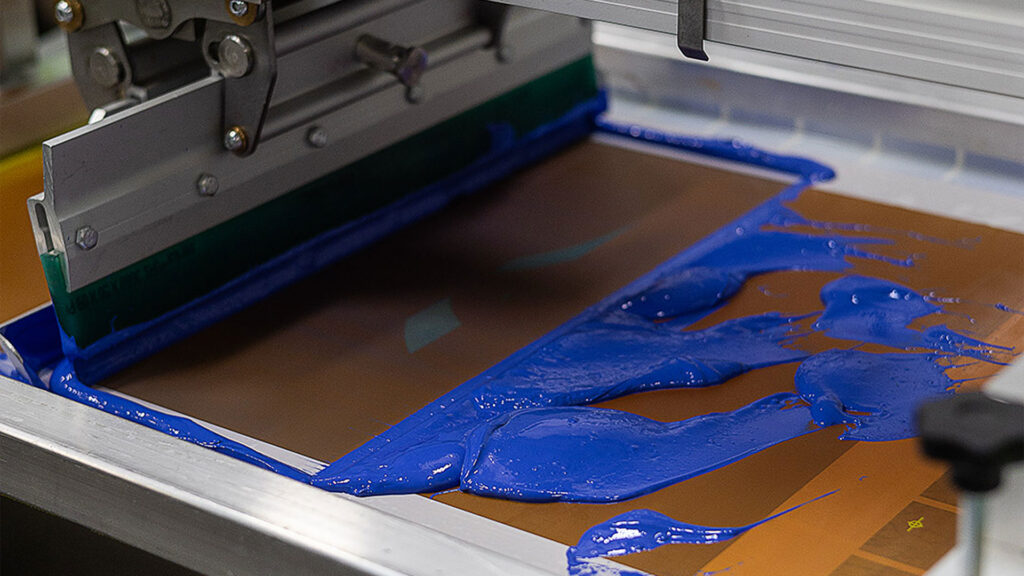You’ve got a design in mind, a team that wants to rep it, and one big question left:
How much does it cost to print t-shirts?
Short answer: it depends.
Better answer: it depends on your shirt, your print, and your quantity.
We know, “it depends” is everyone’s least favorite answer. So here’s the real breakdown of what drives the price—and how to make sure your next batch of custom tees is worth every penny.
1. The Shirt Itself
This is where everything starts. The blank tee is the foundation for how your merch will look, feel, and last.
- Basic cotton tees: Affordable and great for large events or giveaways.
- Midweight blends: Soft, durable, and more “retail” feeling. Perfect for staff uniforms or team merch.
- Premium fits: Think Bella + Canvas, AS Colour, or Lane Seven. These look and feel high-end, which means people actually wear them again.
The fabric, brand, and cut matter. A solid blank makes even a simple print feel premium.
2. The Print Method
Not all prints are created equal. Here are the most common types we use in-house:
- Screen Printing: The classic. Best for bold, simple logos and big runs. Vibrant, long-lasting, and cost-efficient at scale.
- DTF (Direct-to-Film): Great for small runs or complex, colorful designs. No setup screens needed, which saves time on short orders.
- Embroidery: Not technically a print, but if you want texture and polish, embroidery is timeless.
- Special Finishes: Metallics, puff ink, reflective, and other transfers add dimension but increase setup time and cost.
The more complex the method, the more labor and prep required. But sometimes, that detail is what makes the piece stand out.
3. How Many You’re Printing
This one’s huge. Setup costs don’t change whether you’re printing 12 shirts or 500, but your per-item price does.
- Small orders (under 48): Great for samples or limited drops, but you’ll pay more per piece since setup isn’t spread out.
- Standard runs (48–100): The sweet spot for most teams and events.
- Bulk orders (100+): Best value per unit. Perfect for staff uniforms or company-wide drops.
Quantity drives cost efficiency. Bigger batches = smaller per-piece cost.
4. The Design
Colors matter. Each color in a screen print means another layer, another setup. Simple one-color logos cost less than full-color artwork or gradients.
If your logo looks like a rainbow explosion, we’ll steer you toward digital printing or DTF. It’ll keep the design crisp without breaking the bank.
5. The Extras
Custom neck tags, sleeve prints, packaging, and private labeling all add to your brand’s polish—but they also add to your total.
That said, these extras can make your gear look retail-ready, not “free swag.” So it’s a smart upgrade if you want people to actually wear it.
6. The Real Question: What’s It Worth?
Here’s the mindset shift: don’t just think about cost. Think about value per wear.
A scratchy $5 tee that ends up in a drawer? Waste of money.
A soft, well-printed shirt that becomes someone’s favorite weekend tee? That’s marketing you can’t buy.
Your team, customers, and fans are walking billboards. Make sure what they’re wearing reflects your brand in the best way possible.
Final Word: It’s About More Than Ink
So, how much does it cost to print t-shirts? It depends—on quality, quantity, and what story you want your brand to tell.
At Logo Unlimited, we help you find that sweet spot. Whether it’s a small test batch or a large-scale rollout, we’ll match the right shirt and the right print method to your goals and budget.
Because at the end of the day, it’s not just about the cost of a t-shirt. It’s about how far that t-shirt takes your brand.
